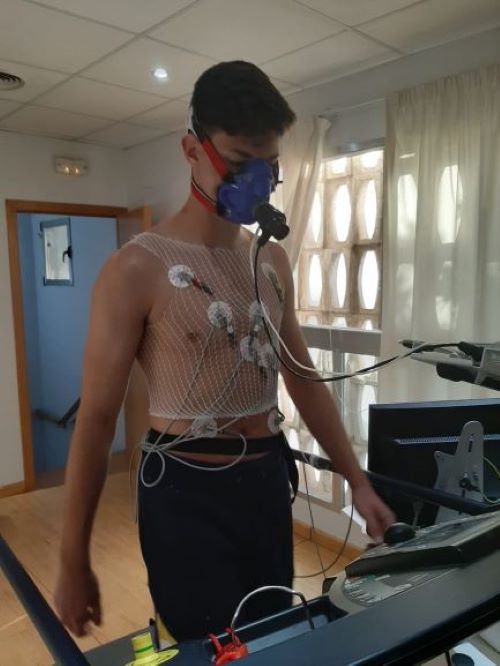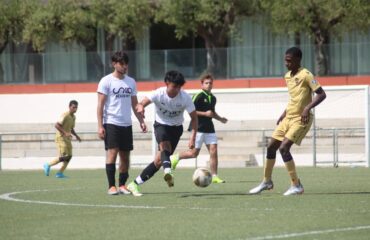Initial medical examinations at the Soccer Academy
Soccer Inter-Action International Soccer Academy begins its annual High Performance program with traditional gas stress tests for its young international players.
Ready to give their all. The summer vacation for the players of the International Soccer Academy of Soccer Inter-Action is over. It is time to get back into the rhythm of competition and to do so it is vital to start the pre-season with a thorough medical examination.
With the aim of taking a further step in the maximum development of the young player, Soccer Inter-Action does not only stay for the traditional medical examination, but has taken advantage of all its resources to offer its internal soccer players a complete stress test for another year. The health of the athlete is the maximum in high performance.
In this test, also called ergometry, the medical services focus on analyzing and evaluating the heart’s response when faced with physical exercise until it reaches the maximum effort possible – reaching the fatigue threshold. In this way, any cardiovascular alteration that is not present while the athlete is in a state of rest can be detected with greater accuracy than in traditional medical examinations.

With all this, the players of the International Soccer Academy of Soccer Inter-Action, located in Enguera (Valencia, Spain), changed their soccer boots for running shoes to get on the treadmill where the medical professionals progressively increased their pace, according of course, to the medical protocols used for these stress tests, the best known being Bruce’s protocol.
With a duration of between six and sixty minutes, the ergometry performed on the young players of Soccer Inter-Action, who are already training at full capacity at the SIA High Performance Center, was also preceded by two electrocardiograms, the first one with the soccer player lying on the stretcher and the second one standing up. Determining the heart rate and whether the heart beats regularly is a mandatory test at any academy that protects the health of its players. It is also used to have initial measurements to be used in the gps in the trainings.
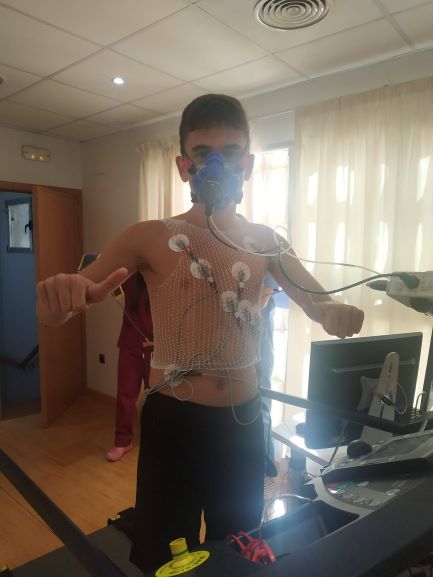
What is a stress test
The stress test, also known as ergometry, consists of an examination of physical resistance through various exercises that serve to assess the prognosis of a heart disease under study or already diagnosed.
This technique is used to reveal asymptomatic pathologies of the athlete at rest, but symptomatic when performing sports, and is used to detect angina pectoris or a coronary condition in patients suffering from chest pain, and thus to evaluate the heart’s response to stress through an electrocardiogram and the determination of other parameters.
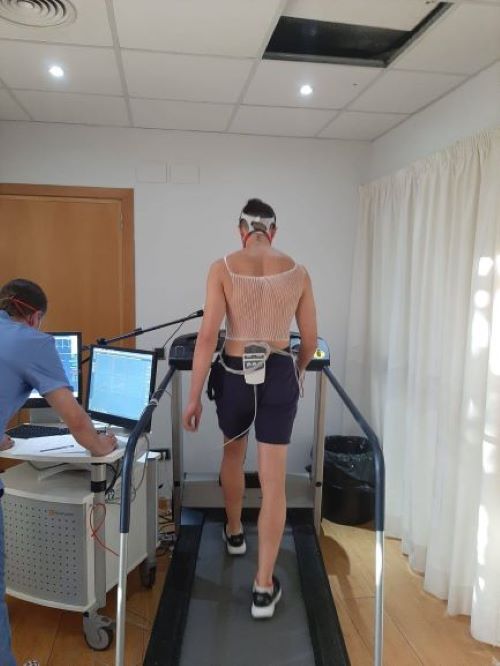
When a player suffers from coronary disease, the obstruction in the arteries is not sufficient to cut off all the blood flow when he is at rest, but when he makes a physical effort, the amount of blood needed is greater and therefore becomes insufficient.
The result is the appearance of angina pectoris that is translated in alterations in the electrocardiogram.
But this test not only provides a diagnosis, but also raises the prognosis of the disease suffered by the athlete and the effect of treatment being administered in case of being pathological.
How the stress test is performed
Ergometry consists of subjecting the patient to the greatest possible effort, reaching the fatigue threshold or maximum level of resistance. The patient should inform the specialist in case of dizziness, shortness of breath, cold sweat, chest pain or nausea.
To perform the test, first the specialist will place flat patches and adhesives called electrodes on the patient’s chest area. These patches will record the electrical activity of the heart during the test.
The person who undergoes this test performs physical exercise on a rolling mat or on a stationary bicycle, exercises that increase in intensity according to the specialist’s instructions.
- – Every three minutes, the level of effort is automatically increased so that the heart speeds up.
- – During this same interval of time, blood pressure control is carried out.
- – When the patient can no longer stand the effort, he or she must inform the specialist and move on to the recovery phase.
- – It is important that the patient makes the maximum effort possible so that the results are reliable.
- – In total, the test can last up to 60 minutes.
Through continuous monitoring and regular blood pressure measurements, the physician will be able to observe the patient’s progress at all times and his or her heart response.
The control of gas consumption is done in parallel.
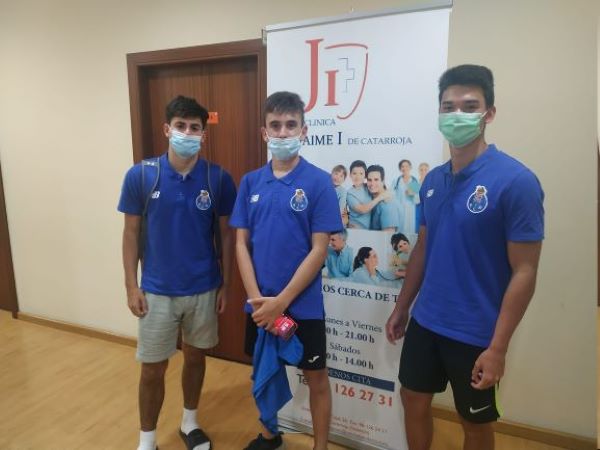
Start of pre-season in Soccer Inter-Action
With the satisfactory results given in the stress tests, the young players of Soccer Inter-Action’s International Soccer Academy in Spain are already focused on enhancing all of their skills both in the training sessions of SIA’s Annual High Performance Program and in the respective teams that are in Soccer Inter-Action’s High Performance Center conducting the pre-season.
The UD SIA Benigànim of the Third Division, the Discóbolo-La Torre de Preferente and the Juvenil of the FC Porto Dragon Force are the three teams that have already begun their respective preseasons with the goal of reaching the start of the league competitions in top form. In addition to the presence of players from the SIA International Soccer Academy, these teams also have international players on trial, such as two French U23 players from the UD SIA Benigànim, who are counting down the weeks to start the always competitive Third Division.



